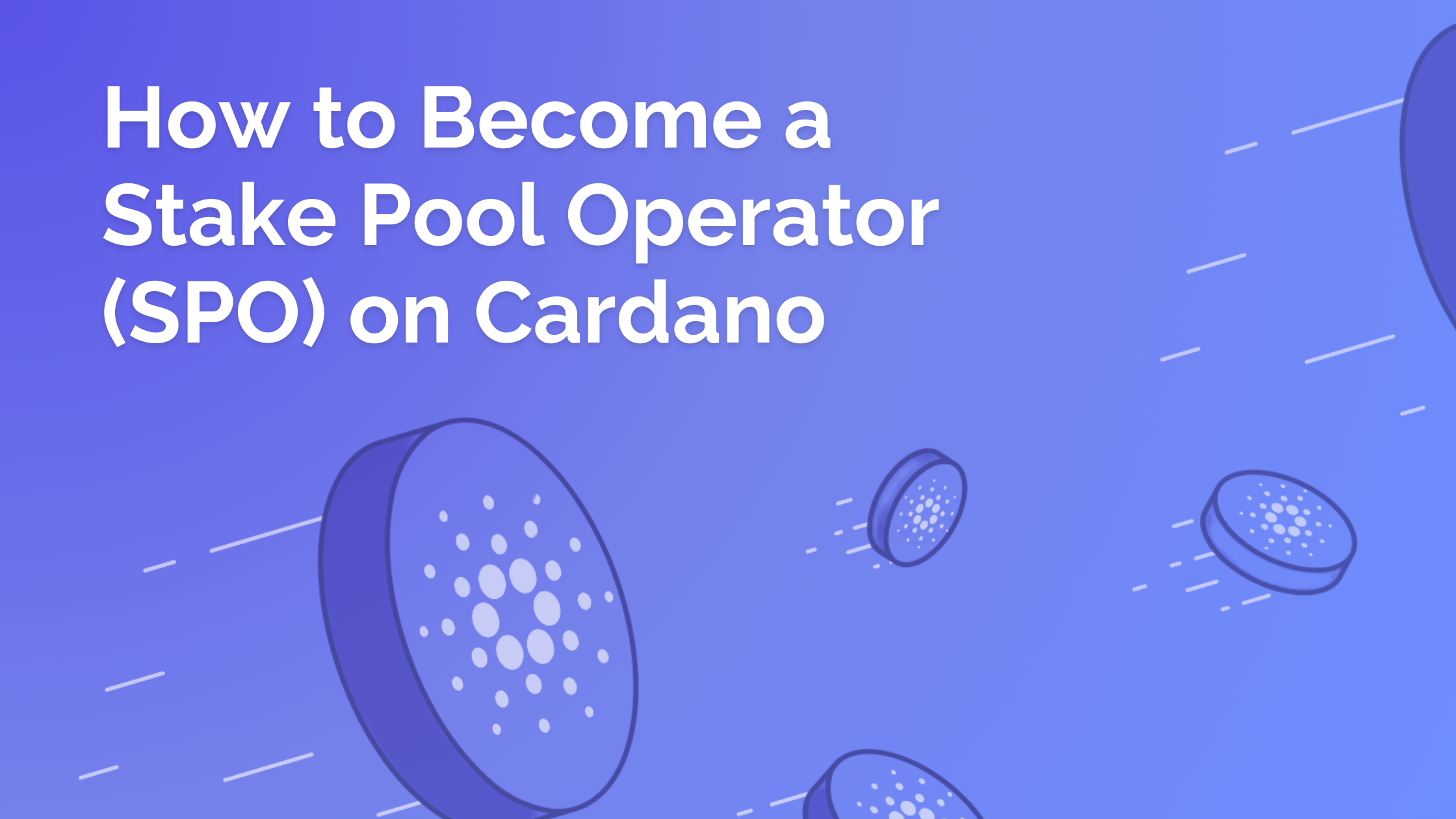How to Become a Stake Pool Operator (SPO) on Cardano

Introduction
Cardano’s blockchain ecosystem thrives on decentralization, and Stake Pool Operators (SPOs) are at the heart of this mission. Becoming an SPO not only allows you to contribute to the network’s security and efficiency but also offers the opportunity to earn rewards. Whether you’re a seasoned blockchain enthusiast or a newcomer eager to dive into the world of Cardano, this guide will walk you through the steps to become an SPO.
Understanding Stake Pools
Stake pools are nodes on the Cardano network that validate transactions and produce blocks. As an SPO, you’ll manage one of these nodes, ensuring its reliability and performance. Stake pools can be public, allowing ADA holders to delegate their stake, or private, where rewards are limited to the pool owner.
Prerequisites for Becoming an SPO
Before setting up a stake pool, it’s essential to have a solid foundation in server management, networking, and blockchain technology. Familiarity with Linux and command-line interfaces is highly recommended. Additionally, you’ll need to understand Cardano’s architecture, including wallets, key pairs, and the Ouroboros consensus protocol.
Setting Up Your Stake Pool
- Prepare Your Hardware and Software
Choose reliable hardware with sufficient processing power, memory, and storage. Install the Cardano node software and ensure your system meets the network’s requirements. - Configure Your Node
Set up your relay and block-producing nodes. Relay nodes connect your stake pool to the Cardano network, while block-producing nodes handle transaction validation. - Generate Keys and Certificates
Create your operational keys and certificates, which are essential for running your stake pool securely. These include hot keys for daily operations and cold keys for sensitive tasks. - Register Your Stake Pool
Use the Cardano CLI to register your stake pool on the blockchain. Provide metadata such as your pool’s name, description, and website to attract delegators. - Monitor and Maintain Your Pool
Regularly update your node software, monitor performance, and ensure uptime. A well-maintained pool is more likely to attract delegators and earn rewards.
Pledging and Delegation
To make your stake pool attractive, pledge a portion of your ADA holdings to the pool. The higher the pledge, the more rewards your pool can earn. Encourage ADA holders to delegate their stake to your pool by highlighting its reliability and performance.
Community and Resources
Join the Cardano SPO community to access valuable resources, tutorials, and support. Platforms like the Cardano Forum and Discord channels are excellent places to connect with experienced operators and stay updated on best practices.
Conclusion
Becoming an SPO on Cardano is a rewarding journey that combines technical expertise with community engagement. By contributing to the network’s decentralization, you play a vital role in shaping the future of blockchain technology. With dedication and the right resources, you can establish a successful stake pool and become an integral part of the Cardano ecosystem.
Download and experience Tokeo on Android and iPhone here.
